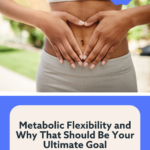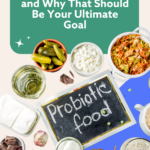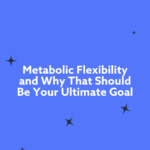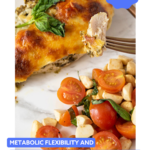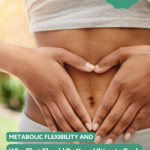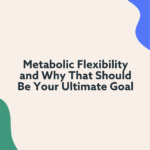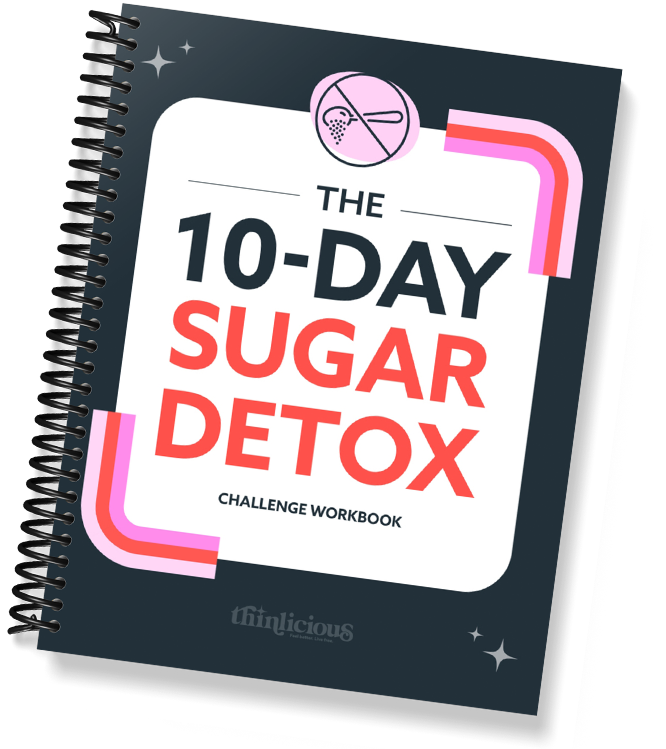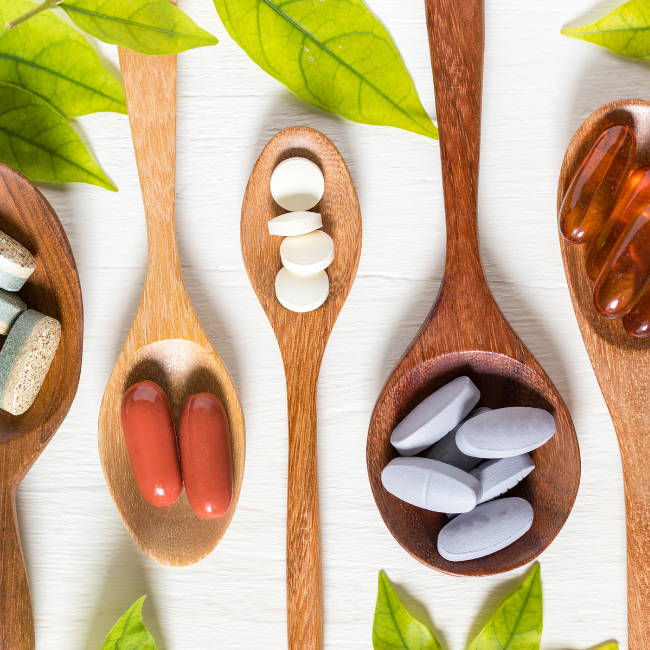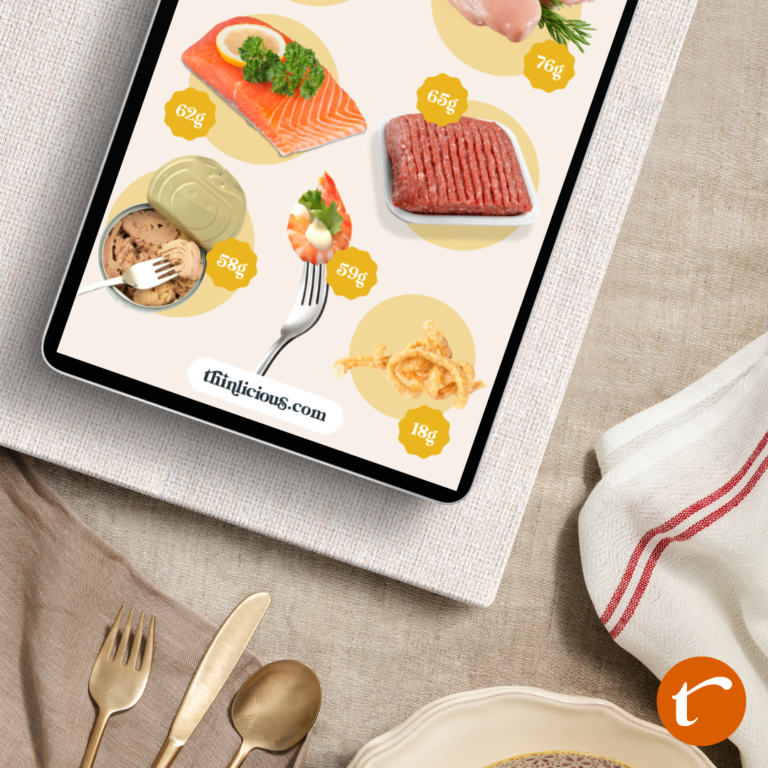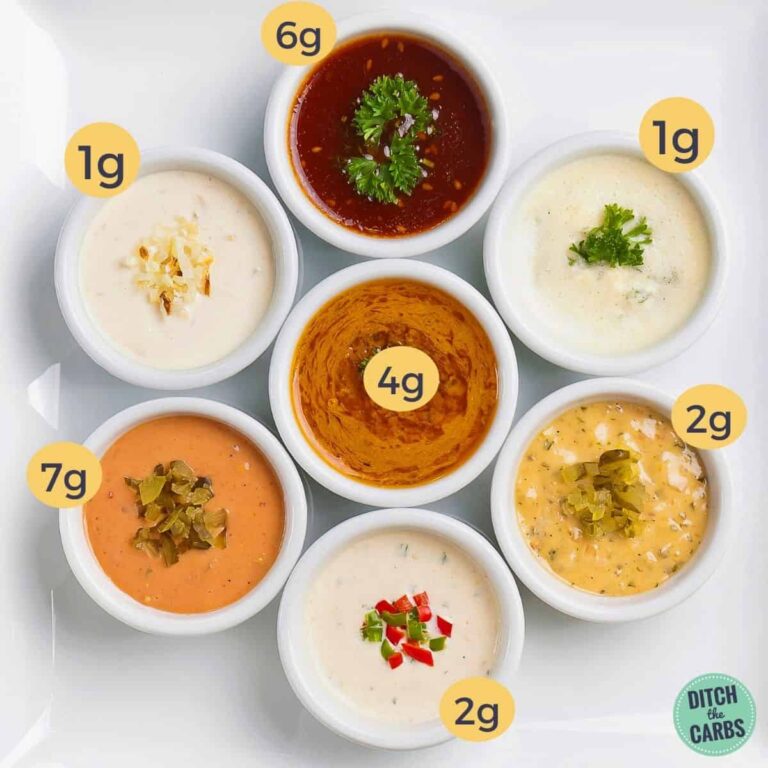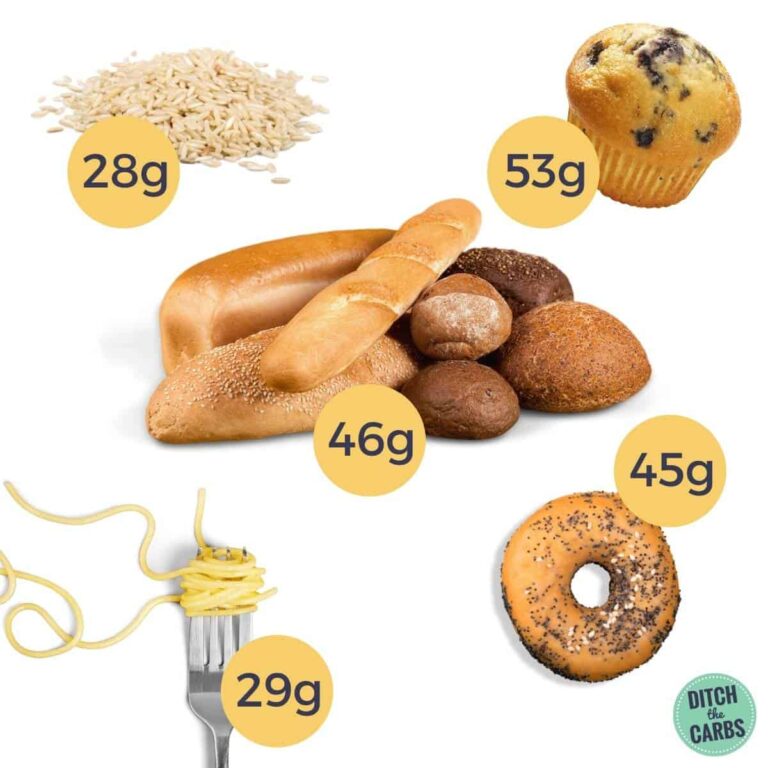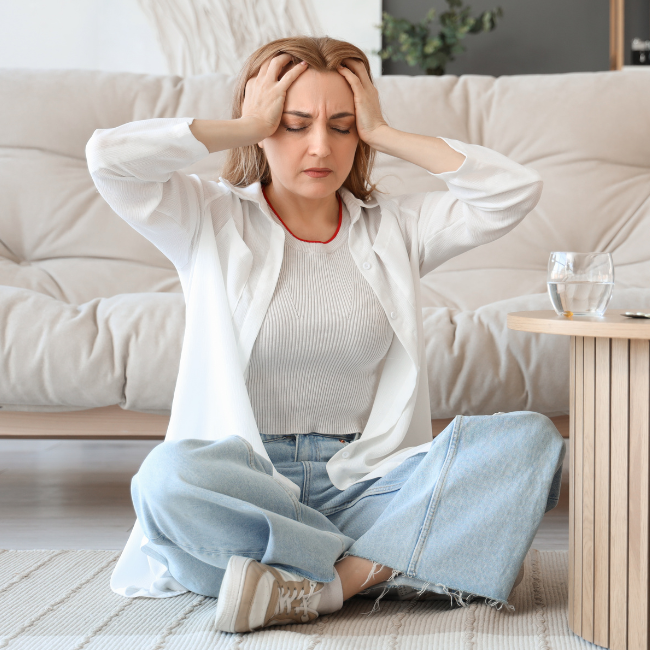Raise your hand if the biggest reason you haven’t actually changed the way you eat is that you’re afraid you’ll have to give up all the food you love forever.
But what if I told you that’s not actually true?
And what if I told you that the whole point of HEALING YOUR BODY from the inside out—the very thing I talk about over and over again on this website, is to get you to a place where you actually feel FREE.
TRULY free.
Are you ready to lose weight and heal your body for life (without dieting, drugs, or making yourself miserable)?
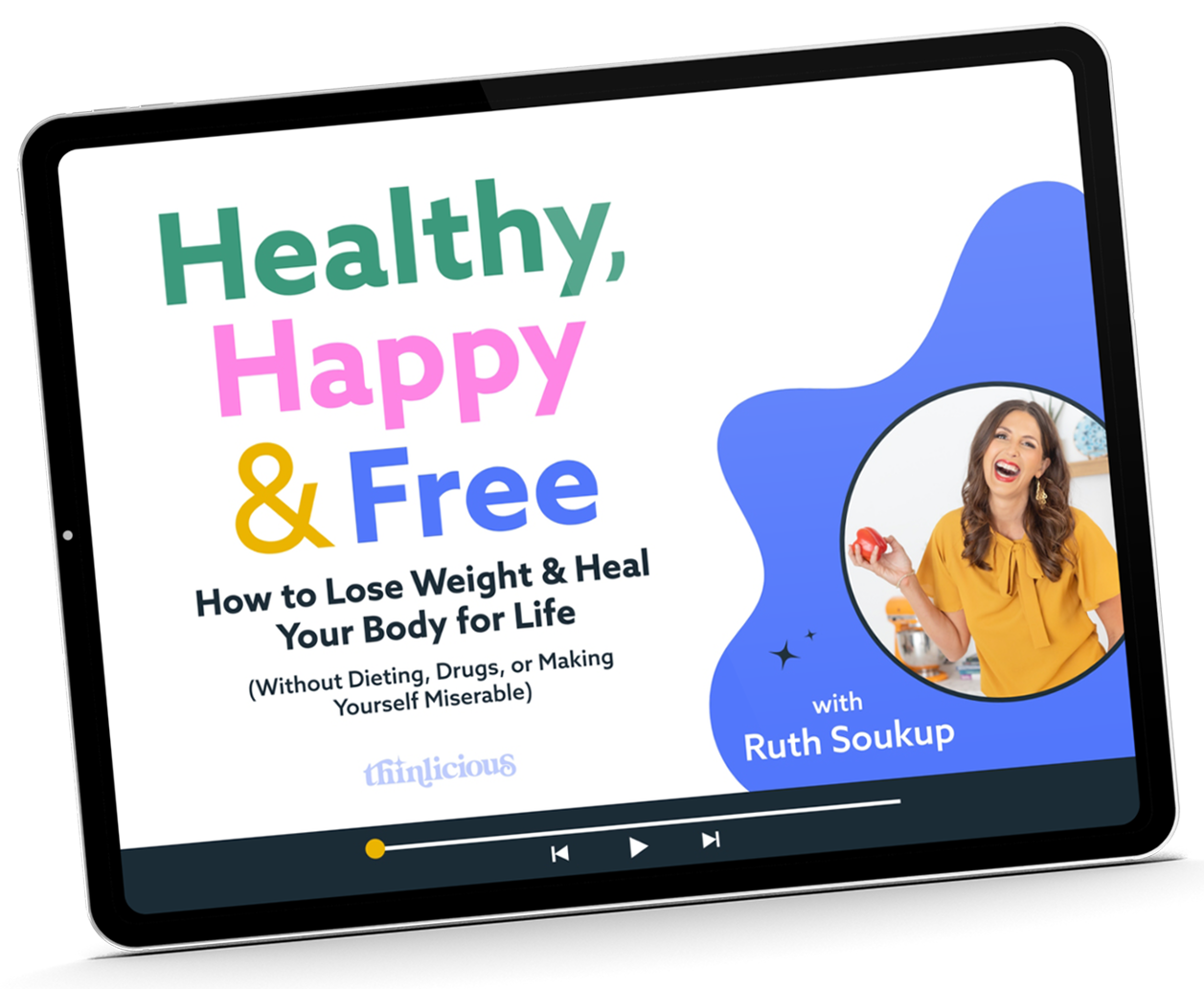
Our free on-demand video training will walk you through how to make this THE year you set health goals…and keep them.
Free to indulge if and when you really want to, but not beholden to food addictions.
Free to enjoy the best of EVERYTHING life has to offer, without going back into that shame spiral.
Free to look and feel your absolute best all the time, and to actually trust the signals your body is giving you?
Free to think about something OTHER than food all the time.
Because it occurred to me recently that as much time as I spend on this blog talking about the problem and the solution, I don’t actually spend a lot of time talking about what it actually LOOKS like to finally be free.
What it actually looks like, day to day, to know your body has been healed, that you’ve reversed your insulin resistance and balanced your hormones and restored your gut health, and that your metabolism is actually working the way it should.
And maybe if I talked about that more, taking the steps to actually get to that point wouldn’t feel quite so scary.
So today, let’s talk about it.
If this is your first time reading this blog, you should also know that I am a 46 year old woman who struggled for a very long time to lose weight and get healthy.
It was literally a battle I fought for years, trying one diet after another, sometimes losing a few pounds than always gaining it right back.
The only thing I DIDN’T try was Ozempic, but that’s only because it wasn’t a thing then! But believe me, had it been around I probably would have been first in line.
Because honestly, I was so desperate to fix that piece of my life.
And if you’re reading this blog because you too are struggling with this, then you probably understand exactly what I’m talking about. How not feeling good about your body and the way that you look and feel starts to impact everything else in your life—your confidence, your relationships, the things you’re willing to say yes to.
It permeates everything.
And we don’t always talk about it. In fact, we usually don’t. It’s this silent battle we’re fighting, and it feels so lonely. We have no idea just how many other women are out there feeling the exact same way.
And for me, it wasn’t until I decided to take a totally different approach that things FINALLY turned around. The biggest thing was that I finally stopped looking for a quick fix, another crash diet, and instead decided to do some real research into the science of weight loss, and into why we gain weight in the first place.
And honestly, what I discovered SHOCKED me because it is SO different than everything we’ve ever been told about what’s healthy and not healthy, and what makes us lose weight and what makes us gain. Our whole lives we’ve been told to eat less and exercise more, and that weight loss is just calories in and calories out, but that’s not true. Not even a little bit. Especially for women, and ESPECIALLY for women over 40.
Because as it turns out, the thing that regulates our weight ISN’T calories, it’s hormones.
And so, as I started to change the way I eat in a way that restored balance to my hormones and reversed insulin resistance and healed my gut, the weight just started to come off.
Without dieting. Without drugs. And without making myself miserable.
I lost 40 pounds in six months, and for the first time EVER I didn’t just gain it all right back. I’ve easily maintained that weight loss for years now.
And let me tell you friend, after struggling with this for SO LONG, it felt—and still does feel—like FREEDOM.
It’s why I’m SO freaking passionate about this work. It’s why I started Thinlicious. Because I can’t help but want to share it, and to help other women find that same freedom.
Because I know how many women still don’t feel free.
But I also know how many women are afraid to actually get started.
Because if you’ve been reading this blog for any amount of time, or if you’ve watched my free training, you’ve probably got at least some semblance of an idea of what our program looks like, and what we advocate for.
After all, it’s not really a secret, because I talk about it all the time, right?
I tell you to cut out sugar and processed carbohydrates, and to focus primarily on whole foods and healthy fat and nutrient-dense protein.
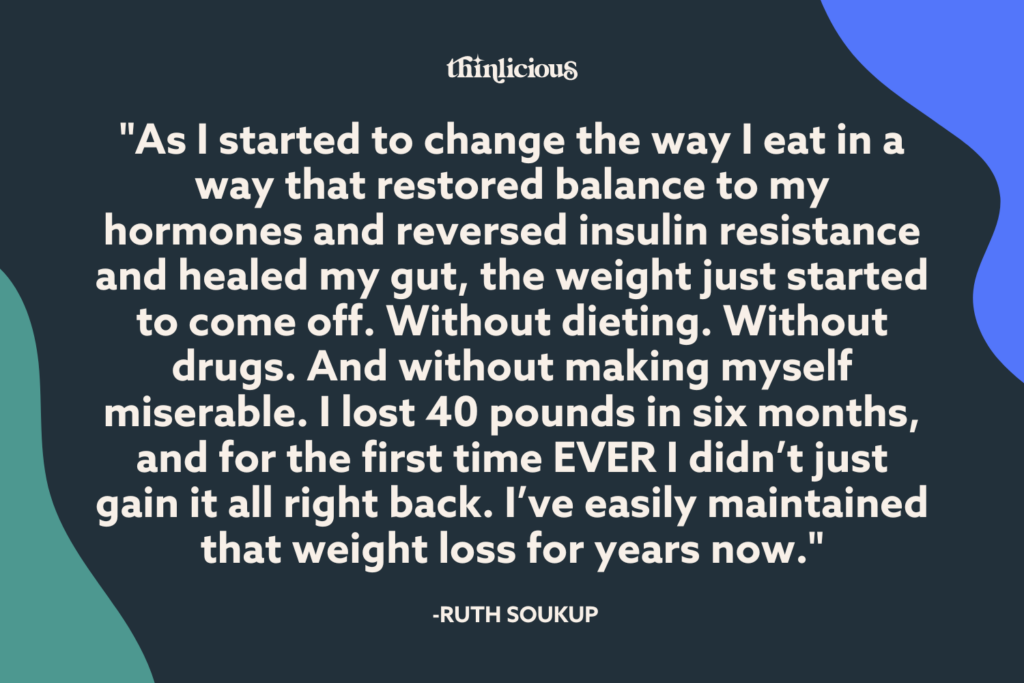
Why Our TAS Program Works in Phases
And if you’re in our TAS program, you might already know that our program actually works in Phases, and that each phase is a little bit different.
In Phase Zero, which we call the preparation phase, you’re just getting ready to begin changing the way that you eat—mentally preparing to make the change, and also physically stocking your pantry with the right foods and planning your meals, so that you’re ready to hit the ground running on Day One. This is a pretty short phase for most people—usually anywhere from a week to 10 days. But it’s important, because it helps to set you up for success.
The next phase is Phase One—what we call the ACCLIMATE phase. And in Phase 1 your whole goal is to retrain your metabolism, and to get your body into a state of burning fat that we call being Thin Adapted—hence the name of our program, the Thin Adapted System. And in order to do that, to actually flip the switch on your metabolism, you have to keep your daily carbohydrates SUPER low, and you also have to keep the percentage of FAT that you are eating super high—basically 70-80% of your total daily calories will come from fat. And that’s a lot, way more than most people are used to. Now don’t get wrong, it’s actually delicious because let’s face it—fat is pretty delicious. But it’s still a big switch.
And this part of our program is probably the closest to what would traditionally be considered a ketogenic style diet, which is why sometimes people make the mistake of thinking our program is just keto with a different name.
But it’s not. Because we don’t actually want you to STAY in Phase One for very long—really only 4-6 weeks. Then you need to move on to Phase Two.
Because Phase Two—what we call the IGNITE phase—is where your body actually starts burning fat, now that your metabolism is working again. And in Phase Two, your priority shifts from getting enough FAT to getting enough nutrient dense PROTEIN. We also start incorporating other elements into the program at this point—things like Intermittent Fasting and something we call PFDs, which stands for Protein Fast Days, and more strength training and fat-burning exercise. And it’s actually important to not to try to incorporate those additional things too soon or too fast, because your body needs time to adjust to one thing at a time.
But how long you STAY in Phase Two really depends on how much total weight you have to lose. In Phase One, most people lose somewhere between 8 and 15 pounds, but in Phase 2, on average, you’ll lose between 1 and 2 pounds a week. So if you have 50 pounds to lose, you can expect to be in Phase 2 for about 40 weeks, or about 9 months. Obviously every body is different, so it could happen a little faster or a little slower, but that gives you an idea.
But what happens AFTER that? After you’ve actually REACHED your weight loss goal and lost as much weight as you want to lose?
Well, that’s where Phase THREE comes in—what we call the MAINTENANCE phase. This is where you’ve actually healed your body and achieved something we call metabolic flexibility, which really just means you’re no longer insulin resistant, your hormones are balanced, and your metabolism is working the way it is supposed to.
And that’s really the phase that I want to talk more about today.
What this Phase—Phase 3—actually looks like for me, on a day to day basis.
What Phase 3 Looks Like For Me
Because I’ll be honest, I actually LOVE this phase so much.
And I feel like if more people knew how good life really is when you get to this point, you’d be SO much more excited about taking those first scary steps.
Because the way I live and eat now is NOT a diet, and I don’t want you to think of it that way either.
First of all, you’re not really dieting in ANY phase of our program, because a diet, by definition, means restricting the amount of food you eat and the number of calories you are eating.
We don’t do that. There’s no calorie counting EVER. If you’re hungry, you can and should EAT.
You just need to eat the right things. But eat as much as you like.
But once you’ve made it to Phase 3, a few things are different.
First , you’ve actually achieved your weight loss goal and you’re no longer actually trying to shed pounds. In my case, 40 pounds was my original goal, which took me about six months, but in the years since then, even being on Phase 3, my weight has slowly creeped down a few more pounds, so that my total weight loss is right around 50 pounds.
And even just saying that out loud feels SO CRAZY to me because it’s SO OPPOSITE of my experience with anything else I ever tried to do to lose weight.
Because I would always gain the weight right back as soon as I went back to eating “normally.”
But that’s not what happened this time. I know that my weight is stable, and that my weight loss is permanent. I’m not even worried about it.
But that also because I think what’s “normal” for me has changed a lot. I have a new normal.
What I thought was healthy
Because I’ll be honest with you, what used to be normal for me was a lot of CRAP.
First of all, I was a vegetarian/pescatarian for 28 years, so I didn’t eat meat and I ate a LOT of carbohydrates—things like bread, pasta, rice, potato chips, quinoa, granola, cereal, Kind Bars, popcorn, bagels. I also ate lots of beans because they were supposedly high in fiber and protein. I loved green smoothies and I would make them almost every day, thinking they were super healthy when they were actually packed full of sugar. I loved yogurt and would eat that almost every day also, again thinking it was healthy, when again, it was actually packed full of sugar. And I ate a TON of soy and fake meat products—veggie burgers, beyond burgers, black bean burgers, fake chicken nuggets. Once again, thinking that they were HEALTHY.
If you would have asked me back then, “do you eat a lot of processed food,” I would have said no because I honestly didn’t even realize how much of what I was eating was actually processed. I mean yes, I loved Doritos and those Jalepeno potato chips, but for the most part, I would’ve rated my whole diet as very healthy.
Which is why it didn’t make sense to me that I was struggling so much.
My new normal
But now, obviously, after all the research that I’ve done and everything that I’ve learned, I have a totally different understanding of the kind of foods that are actually healthy and what will actually nourish my body.
It’s almost like once you’ve seen the light, you can’t unsee it.
I can’t walk down the cereal aisle of the grocery store without in my mind seeing those giant Mr. Yuck stickers everywhere—do you remember those—because that’s what it is to me now. Poison. I could eat it. Nobody’s stopping me. But why would I want to?
And so, my new normal of what I eat day to day is all the foods that I’ve come to love for the way they nourish my body. I eat lots of red meat and chicken and sometimes pork and fish, although I don’t enjoy those as much as steak or chicken. I still eat yogurt, but now I buy the unsweetened kind and mix it with almond butter or peanut butter and drizzle a little raw honey on top for sweetness.
I don’t actually count carbs, or even pay attention to how many carbohydrates I am eating, but my guess is that if I did, my carbs would be a lot lower than most people—maybe anywhere from 50 to 150 grams a day instead of the 350-500 range that most people are at in the Standard American Diet.
Now I pay a lot more attention to the type of food I’m eating—making sure that I get enough protein and healthy fat, and that eating probiotic rich foods that are good for my gut health, rather than worrying too much about carbohydrates.
Almost all of the food that I cook and that we eat in our home is Thinlicious-friendly, because that’s the food we LIKE to eat. My whole family likes it, and actually WANTS to eat that way.
That said, I will occasionally make things like jasmine rice or mashed potatoes to go along with whatever we’re eating, and as far as bread goes, one thing I added in this year that I’ve actually been loving so much is real fermented sourdough. No, I don’t make it myself, although I have thought that would be fun, but I do order it from a place called Wildgrain.
The fermentation in sourdough actually makes it good for your gut health, as does the fact that the fermentation process breaks down the gluten.
So if we’re at home and I’m eating bread that’s usually what I’m eating. It’s so yummy.
And if my kids really want pasta for dinner, I’ll make that too.
And yes, I actually do eat it. But what’s funny is that my kids almost NEVER ask for pasta anymore, and they used to want it all the time. Honestly I think they’ve asked for it once in the last year.
If they request something, it’s almost always one of my Thinlicious recipes—their all-time favorites are the Parmesan Pork Chops, the Pesto Chicken, and the Buffalo Chicken Casserole, although lately they’ve been really into BOWLS. If you follow me on Instagram, you’ve probably seen some of them—they especially liked the Greek Chicken Bowl, the Beef BanhMi Bowl, and the Eggroll in a Bowl.
And I think this is important to clarify—I do not restrict my kids’ eating in any way. I want them to have a super healthy relationship with food, and honestly I think they do.
They’re teenagers and they still eat crap sometimes, but the food they ask for now is all really healthy and high in protein and healthy fat and typically pretty low in carbs.
It’s almost like their preferences have changed without even realizing it.
At this point in my health journey, I don’t feel like there’s anything I can’t enjoy or can’t have, I just don’t typically eat it every day.
If we go out to eat, sometimes I’ll order a steak with vegetables on the side, but sometimes I’ll order a burger and actually eat the bun.
And if we happen to stumble upon a place that serves homemade pie, you better believe I’m going to order it. Every single time.
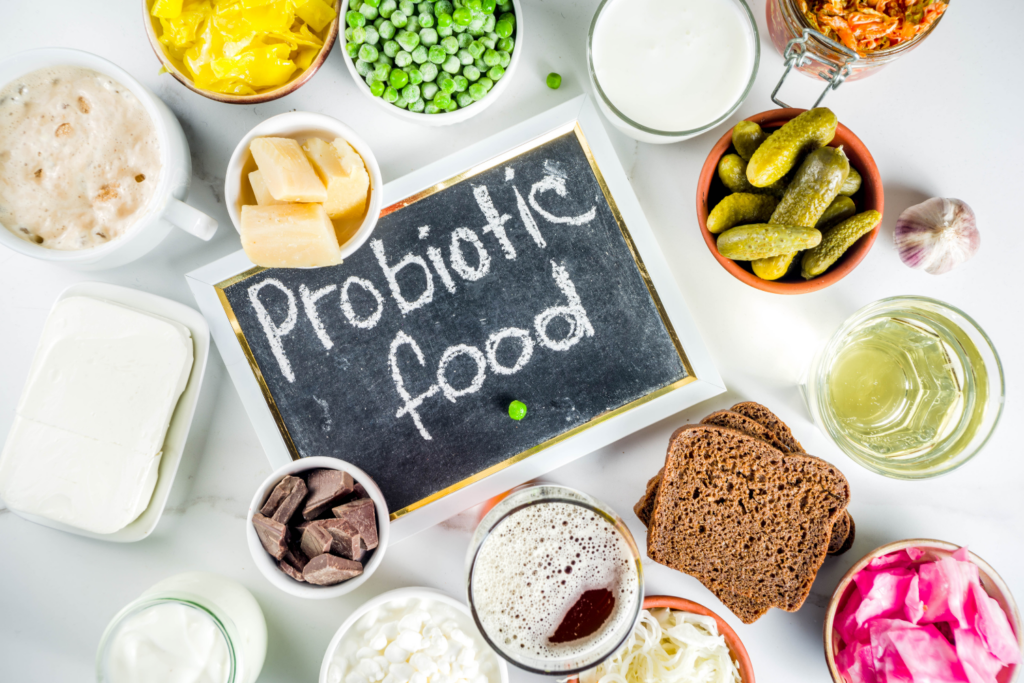
Enjoying Freedom
Because to me that’s what freedom is, right?
It’s eating food you love pretty much all of the time. Being able to enjoy something when you want to, but never feeling controlled by it.
And not only that, I think the thing that’s craziest to me is that I honestly am not really thinking about food most of the time, when it used to take up such a huge part of my day.
Before, I was always hungry. Even right after I ate, I never felt full. Never felt satisfied.
I would already be thinking about what I was going to eat next.
Now food is more often than not an afterthought.
In fact, sometimes I have to force myself to eat more because I actually don’t want to lose any more weight.
But many days I’ll go almost the whole day before realizing I haven’t eaten yet.
I guess I sort-of do intermittent fasting by accident, because I don’t watch the clock or try to fast for a certain amount of time.
I eat when I’m hungry and I stop when I’m full.
WHICH IS SO DIFFERENT THAN I USED TO BE.
And I guess that’s why I love it so much.
Because I really do feel completely free.
The Non-Food Related Benefits of Getting Healthy for Life
But not only that, I’m just so much healthier overall than I used to be, and I think that’s a big deal too.
Because when your gut is healthy and your metabolism is functioning the way it’s supposed to, you just FEEL BETTER.
I don’t have inflammation or swelling or indigestion or heartburn anymore. My joints don’t hurt. I don’t get headaches like I used to, except on those occasions where I drink too much wine and it’s totally self inflicted.
I’ve got more than enough energy to make it through the whole workday, even though I get up at four am, and then still have plenty of energy left to cook dinner for my family.
I didn’t used to. I used to be completely wiped by 2pm.
I also used to get sick all the time, but now I almost NEVER get sick. In fact, I think in the last three years, I’ve MAYBE been sick one time, and that was only for a day.
And I am definitely not a germaphobe.
My immune system is SOLID, and it’s awesome.
Final Thoughts
At this point I don’t know what else to say except that everything I hope you understand that everything I just described is 100% possible for you too.
Does it take some effort to get there? You bet. You have to learn a new way of living and eating and even thinking about food. You have establish new habits. And you have to unlearn a lot of bullshit about what we’ve been told is healthy and what’s not. Changing your lifestyle will take some commitment, but MAN OH MAN, is it worth it!
Because after struggling with this part of my life for so long, I can honestly tell you that this freedom that I have now feels AMAZING. I am so grateful every single day that I finally figured out a solution that works.
And I want you to know that this is a solution—a REAL solution and a PERMANENT solution—that will work for you too.
Okay friends, that’s everything I have for you today, but if for some reason you HAVEN’T yet checked out my free training and you want more info about how to actually get STARTED with this way of life so that you too can spend the REST of your life in Phase 3, then be sure to go check it out right now—you can find it right HERE.
What if you could actually take control of
your health in just 10 days?
It’s not your fault you can’t lose weight as a woman over 40 even though you’ve likely tried literally everything. Your metabolism probably feels broken and your hormones are likely all out of whack.
But you can fix it all with ONE simple change: eliminate sugar. We make it super easy with daily lessons teaching you the science behind what makes us gain weight in our midlife and beyond! Are you ready to get started now?

